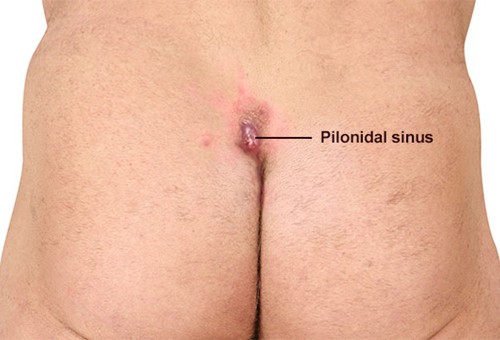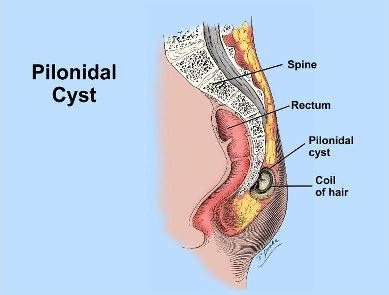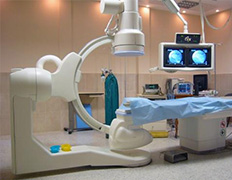Pilonidal Sinus
What Is Pilonidal Sinus Disease?
A pilonidal sinus (PNS) is a small cyst or abscess that occurs in the cleft at the top of the buttocks. It can cause severe pain and often becomes infected. If it becomes infected, it may exude pus and blood and emit a foul smell.
 A pilonidal sinus is a condition that mostly affects men and is common in young adults.
A pilonidal sinus is a condition that mostly affects men and is common in young adults.
A pilonidal sinus (PNS) is a small cyst or abscess that occurs in the cleft at the top of the buttocks. It can cause severe pain and often becomes infected. If it becomes infected, it may exude pus and blood and emit a foul smell.
A pilonidal sinus is a condition that mostly affects men and is common in young adults.
What Are the Causes of Pilonidal Sinus Disease?
Though the exact origin of the disease is not known, its cause is believed to be a combination of:
- changing hormones (because it occurs after puberty)
- hair growth
- friction (from clothes or from spending a long time in a sitting position)
- infection (Miller 2003)
Though the exact origin of the disease is not known, its cause is believed to be a combination of:
- changing hormones (because it occurs after puberty)
- hair growth
- friction (from clothes or from spending a long time in a sitting position)
- infection (Miller 2003)
Identifying a Pilonidal Sinus and Recognizing Signs of Infection
You may not have any noticeable symptoms at first other than a small, dimple-like depression on the surface of your skin. However, once the depression becomes infected, it will quickly develop into a cyst (closed sac filled with fluid) or an abscess (swollen and inflamed tissue where pus collects).
Symptoms of infection include:
- pain when sitting or standing
- swelling of the cyst
- reddened, sore skin around the area
- pus or blood draining from the abscess, causing a foul smell
- hair protruding from the lesion
- formation of more than one sinus tract
You may also experience a low-grade fever, though this is much less common.
Infection
You may not have any noticeable symptoms at first other than a small, dimple-like depression on the surface of your skin. However, once the depression becomes infected, it will quickly develop into a cyst (closed sac filled with fluid) or an abscess (swollen and inflamed tissue where pus collects).
Symptoms of infection include:
- pain when sitting or standing
- swelling of the cyst
- reddened, sore skin around the area
- pus or blood draining from the abscess, causing a foul smell
- hair protruding from the lesion
- formation of more than one sinus tract
You may also experience a low-grade fever, though this is much less common.
How Are Pilonidal Sinuses Treated?
Conservative Treatment
If your case of pilonidal sinus is diagnosed early on, you are not experiencing severe pain, and there is no sign of inflammation, you doctor will usually prescribe a broad-spectrum antibiotic (an antibiotic effective in treating a wide range of different bacteria). If this treatment resolves the problem, your doctor will recommend a follow-up examination as well as regular hair removal (shaving) of the site and particular attention to hygiene.
 Lancing
Lancing
Before this procedure, your doctor will give you a local anesthetic. He or she will then use a scalpel to open the abscess. Then your doctor will clean away any hair, blood, and pus from inside the abscess.
The wound is then packed with sterile dressing and allowed to heal from the inside out. The wound usually heals within four weeks, and many patients will require no further treatment.
Phenol Injection
For this type of treatment, your doctor will first give you a local anesthetic. He or she will then inject phenol (a chemical compound used as an antiseptic) into the cyst. This procedure may need to be repeated several times. Eventually, this treatment will cause the lesion to harden and close.
The recurrence rate after phenol injection is high. Therefore, it is becoming less common and is gradually being replaced by surgery.
Surgery
If you have a recurring problem with pilonidal sinus or you are suffering from more than one sinus tract, your doctor will recommend a surgical procedure.
You will first be given a local anesthetic. Then the surgeon will slice open the lesions, removing all of the pus and debris. Once this process is complete, the surgeon will stitch the wounds closed.
After surgery, your doctor will explain how to change the dressings and will recommend shaving the site to prevent hairs from growing into the wound.
What Is the Outlook for Pilonidal Sinus Disease?
Depending on the severity of the disorder and the type of treatment, pilonidal sinus will usually clear up within four to 10 weeks.
What Complications Are Associated With Pilonidal Sinus Disease?
There are a number of complications that may arise from pilonidal sinus. These include a recurrence of the pilonidal sinus even after surgery and wound infection.
Signs that the wound is infected include:
- severe pain
- inflamed, swollen skin
- a temperature of 100.4 degrees Fahrenheit or higher
- blood and pus seeping from the wound site
- a foul smell coming from the wound
Disease?
There are a number of complications that may arise from pilonidal sinus. These include a recurrence of the pilonidal sinus even after surgery and wound infection.
Signs that the wound is infected include:
- severe pain
- inflamed, swollen skin
- a temperature of 100.4 degrees Fahrenheit or higher
- blood and pus seeping from the wound site
- a foul smell coming from the wound
How Can I Prevent Pilonidal Sinus Disease?
You can prevent recurrence of pilonidal sinus by washing the area on a daily basis with a mild soap, making sure all soap is removed, keeping the area completely dry, and avoiding sitting for long periods
Our Expertise in Medical Services
Rana Hospital was started with a dream of providing the best facilities for Piles, Fissures, Fistula and all Anorectal problems.

Mon to Sat:
8:30 AM – 1:30 PM
4:00 PM – 6:30 PM
Mon to Sat:
9:00 AM – 1:30 PM
4:00 PM – 6:30 PM
Make an Appointment
 Accreditation & Awards
Accreditation & Awards
The Hospital organized a free checkup camp for PILES on 24th October 2013 in which 717 patients from all over India were examined. It was followed by one day free operation camp on 27th October 2013. Dr Suri single-handedly performed 391 free surgeries in 8 hours & 45 minutes setting a World Record.




